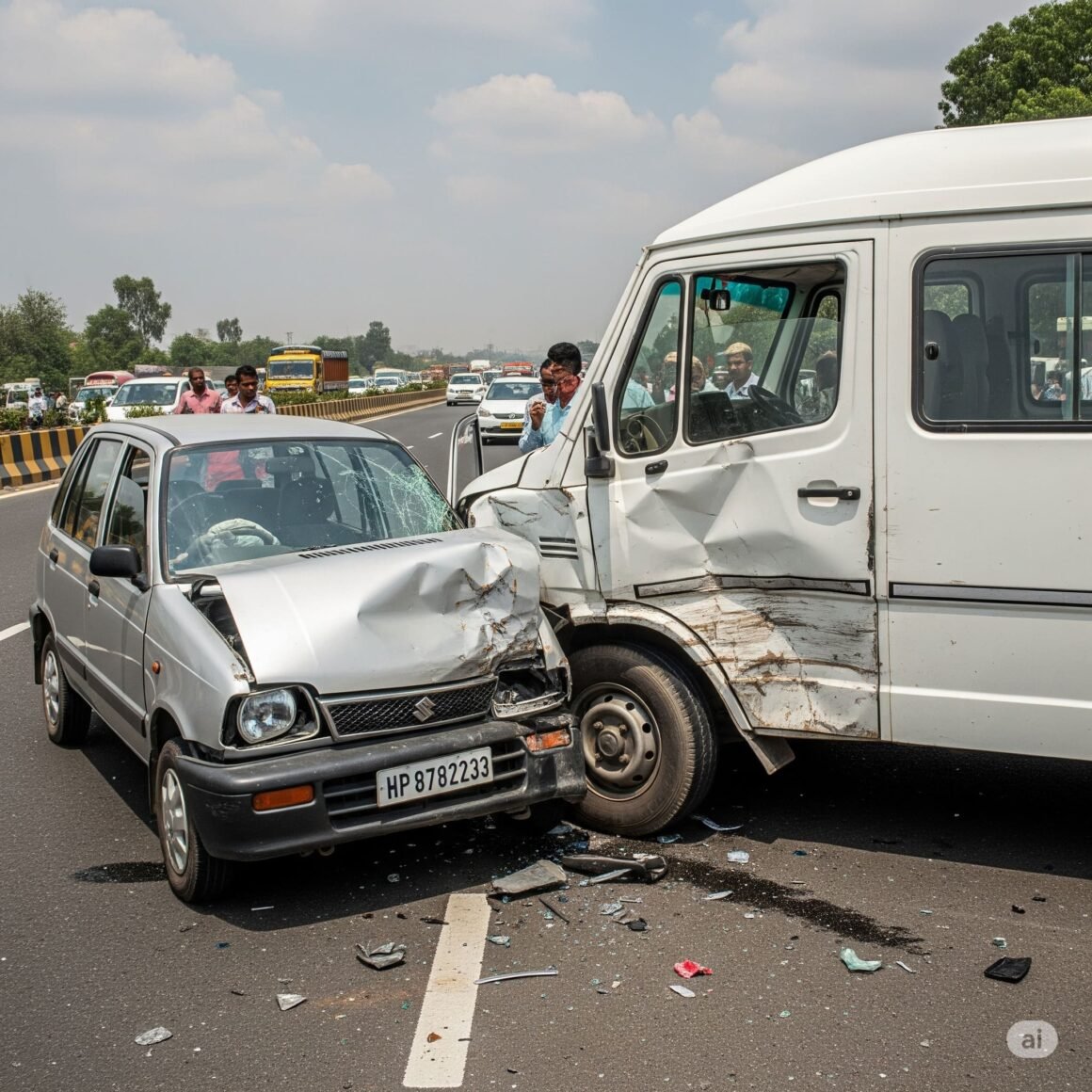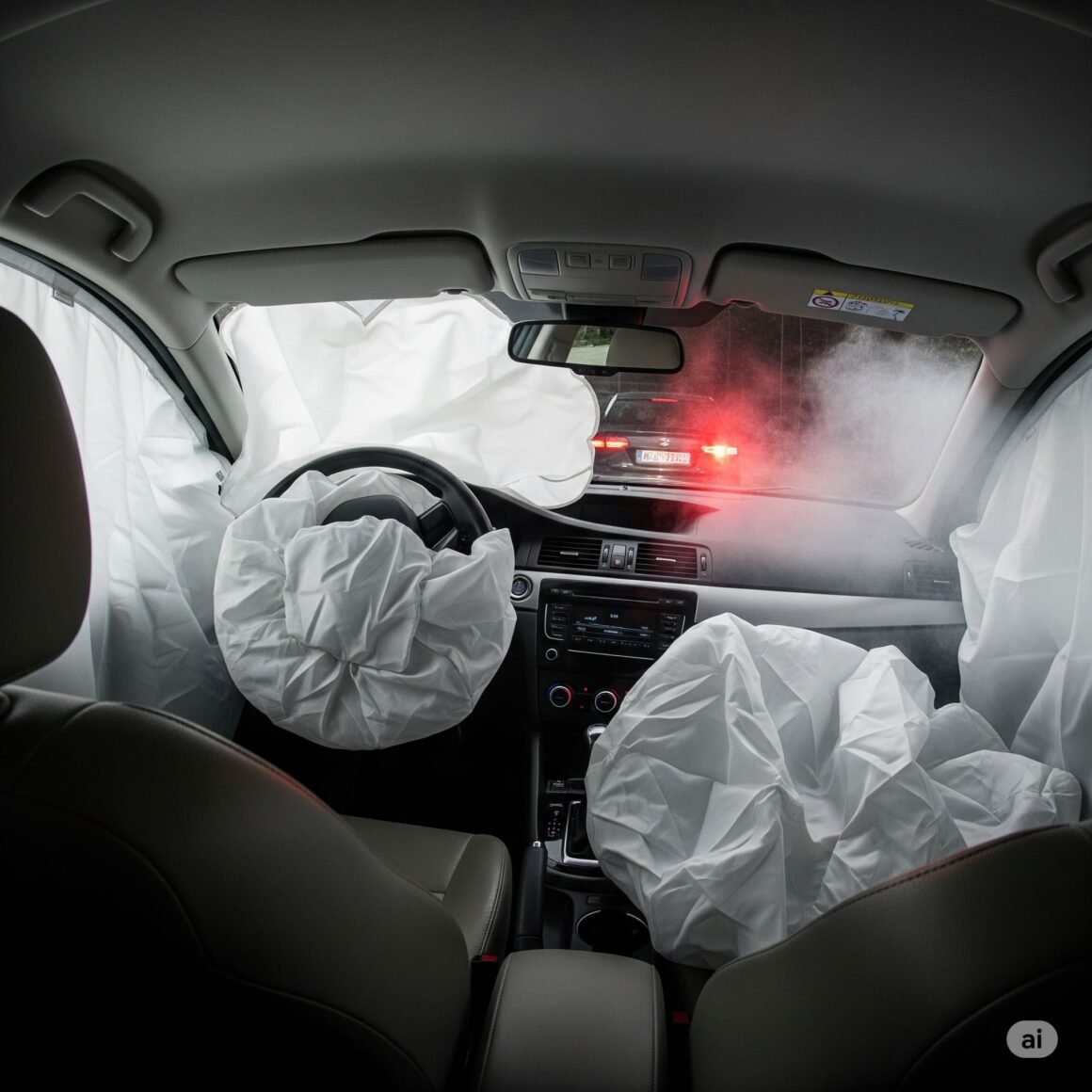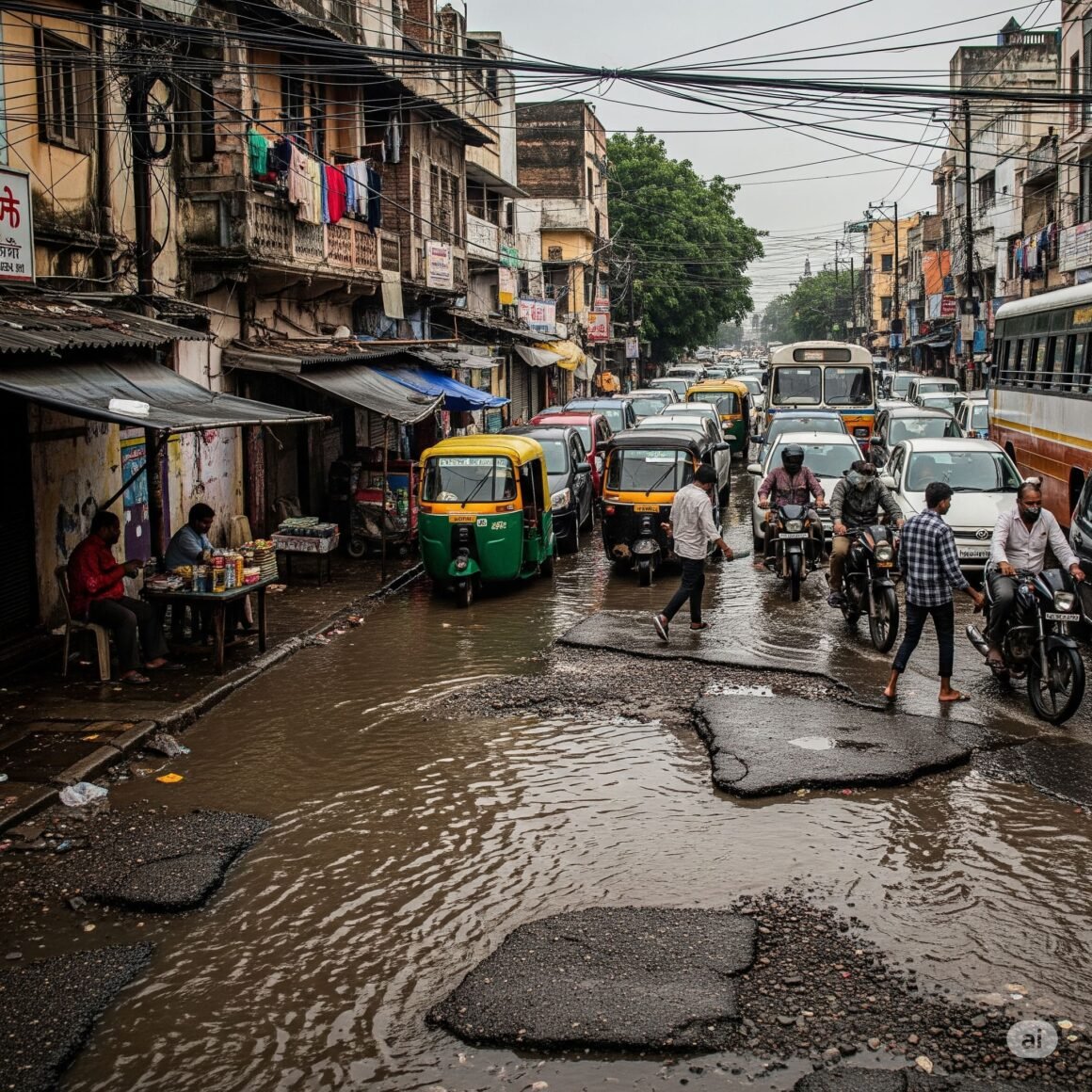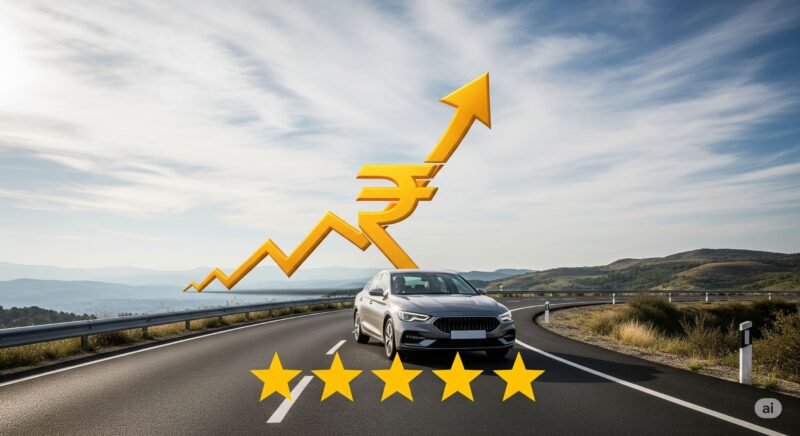If you’ve been shopping for a new car in India lately, you might’ve noticed something, the prices have shot up. A hatchback that once cost ₹4–5 lakh is now inching closer to ₹7–8 lakh. But what’s behind this steady climb? Is it just inflation, or is there something more happening under the hood?
Let’s take a closer look at why safer cars in India are getting more expensive, and how the much-needed shift towards safety is a big part of that story.
Before 2020: The Era of Unsafe Cars
Not too long ago, Indian roads were full of cars that barely met basic safety standards. For decades, the focus of most manufacturers, especially the market leader Maruti Suzuki, was to keep costs low and mileage high. While affordability helped millions of Indians buy their first car, safety often took a backseat.

Most entry-level models lacked airbags, ABS, or even a reinforced chassis. Structural integrity was poor, and many cars failed global crash tests miserably. It wasn’t uncommon to see popular models like the Maruti Alto, WagonR, or Swift scoring dismal ratings, sometimes 0 or 1 star, in car safety ratings conducted by Global NCAP.
The Human Cost
This negligence came at a steep price. India has one of the highest rates of road accidents in the world. According to the Ministry of Road Transport and Highways, over 1.5 lakh people die every year in road accidents, that’s more than 400 lives lost every day. A significant chunk of these fatalities happen because the cars involved couldn’t absorb the impact or protect passengers effectively.
Why Unsafe Cars Sold So Well
For years, car buyers in India didn’t ask too many questions about safety. The buying decision revolved around mileage, resale value, service network, and upfront cost. Maruti Suzuki, with its wide dealer network and budget-friendly cars, captured the mass market by delivering exactly that, basic mobility at the lowest possible price.
Meanwhile, companies like Volkswagen, Ford, and even Tata and Mahindra (at the time) offered stronger, safer cars in India. But the problem? They were costlier and didn’t deliver the same fuel economy or low maintenance perception. So, despite better safety and sometimes being the best safety car in India, these models struggled to compete in volumes.
The Change: When Safety Became a Priority
Things started shifting in the late 2010s. A growing number of Indian buyers, especially young, urban professionals, began reading crash test reports, watching review videos, and prioritising safety features. At the same time, several tragic accidents involving well-known public figures drew national attention to the dangers of poorly built cars.

The government took notice too. In 2019, Bharat NCAP was announced, and new safety regulations became mandatory:
- Driver airbag: Compulsory in all new cars from 2019
- Dual front airbags: Made mandatory for all new models in 2021
- ABS with EBD: Now a standard requirement
- Reverse parking sensors, seatbelt reminders, high-speed alerts: All became standard equipment
These steps forced manufacturers to redesign older platforms or discontinue them entirely, which meant added R&D and retooling costs, passed on to the buyer.
But Safety Isn’t the Only Reason for Higher Prices
While safety regulations were a major trigger, other factors contributed too.
1. COVID-19 and the Chip Shortage
When the pandemic hit in 2020, car production across the world came to a halt. Then came the semiconductor shortage, which crippled supply chains. Modern cars, even entry-level ones, need dozens of chips to run everything from infotainment systems to airbag sensors. As demand rebounded post-lockdown, chip supply couldn’t keep up, pushing up prices.
2. Global Inflation and Raw Material Costs
From steel and rubber to plastics and glass, the cost of materials surged globally. Freight charges also went through the roof. Naturally, carmakers had to adjust their pricing to protect margins.
3. More Features Than Ever Before
The average budget car today is significantly better equipped than it was five years ago. Even hatchbacks now come with:
- Touchscreens with Android Auto and Apple CarPlay
- Automatic climate control
- Steering-mounted controls
- Rear camera and parking sensors
- LED headlamps and DRLs
In higher segments, features like ADAS (Advanced Driver Assistance Systems), including lane assist, emergency braking, and adaptive cruise control, are becoming more common, trickling down from luxury cars. These technologies don’t come cheap, but buyers now expect them as part of safer cars in India.
The Trade-off: Price vs. Peace of Mind
Yes, cars have become more expensive. But they’ve also become far safer and more sophisticated. A car that scored zero in crash tests a few years ago might now score 4 or even 5 stars, thanks to better structural design and standard safety kit.
You’re not just paying more, you’re getting more: a vehicle that’s better built, more comfortable, and most importantly, far more capable of protecting you and your family in an accident.
For those looking for the best safety car in India, this price increase is often worth the peace of mind.
The Bigger Problem: Roads and Driving Behaviour
But let’s not ignore the elephant in the room, which is the state of road safety in India.

Even the safest car in India can’t save you from reckless driving or poorly maintained roads. In India, many accidents happen because of:
- Overspeeding and rash driving
- Drunk driving or fatigue
- Ignoring traffic signals and road signs
- Driving casually without focus or attention
- Overloaded trucks and unsafe two-wheeler behaviour
- Potholes, unmarked speed breakers, and poor road design
In short, we still have a long way to go. Better safer cars in India alone can’t reduce accidents. We need better roads, better traffic management, and a massive improvement in driving discipline.
A Positive Sign: The Road Ahead Looks Better
Despite all the challenges, there’s hope. Over the last few years, India’s road infrastructure has started improving dramatically. The Bharatmala project, expansion of national highways, and a growing network of 6-lane expressways are making intercity travel smoother and safer.

From the Mumbai-Pune Expressway to the new Delhi-Meerut and Delhi-Mumbai corridors, high-speed, access-controlled roads are becoming a norm. These expressways are reducing travel times, encouraging safer driving practices, and making the overall driving experience more pleasant.
With safer infrastructure and the rise of safer cars in India, the road ahead looks promising.
Final Thoughts
So yes, safer cars in India cost more today than they did five years ago. But this price hike isn’t just because of greedy manufacturers or global inflation. It’s a result of meaningful progress in how India views road safety and car quality.
Cars in India are finally becoming machines that not only move you but protect you. Whether you’re searching for the best safety car in India or keeping track of car safety ratings, the market is evolving. And that’s a cost most of us are now willing to bear.
